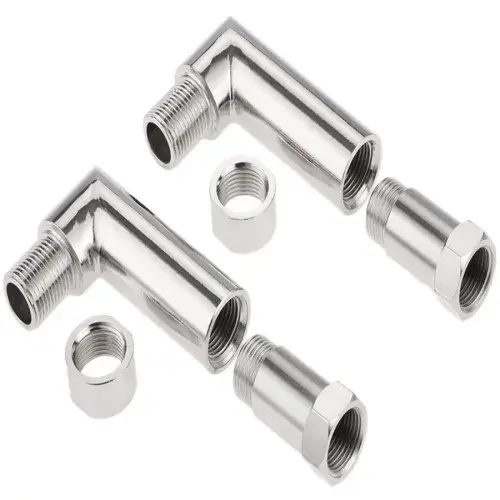How Oxygen Sensor Spacer works and what it does
2023-07-31
An Oxygen Sensor Spacer, also known as a Mini Catalytic Sensor Spacer, is a device used in automotive exhaust systems. Its main purpose is to modify the Oxygen Sensor's readings and improve the overall performance of the vehicle.The oxygen sensor, located in the exhaust system, measures the amount of oxygen present in the exhaust gases. This information is crucial for the proper functioning of the engine control unit (ECU), as it helps determine the air-fuel mixture ratio for optimal combustion. O2 Sensor Spacer and oxygen sensor spacer are related terminologies referring to the same device. Both terms are used interchangeably to describe a device that modifies the readings of the oxygen sensor in an automotive exhaust system. The spacer alters the position or placement of the oxygen sensor, which can affect engine performance, fuel efficiency, and troubleshooting of certain issues related to the sensor.

Here's how an oxygen sensor spacer functions and its potential benefits: 1. Engine Performance: By altering the position of the oxygen sensor, the spacer changes the airflow around it. This modification can affect the readings provided by the sensor to the ECU. The altered readings can result in adjustments to the fuel injection and ignition timing parameters, potentially enhancing engine performance, responsiveness, and power output. 2. Fuel Efficiency: A properly installed oxygen sensor spacer can optimize the air-fuel mixture, leading to improved fuel combustion efficiency. This optimized combustion can increase fuel economy by allowing the engine to extract more energy from the fuel, reducing fuel consumption and emissions. 3. Troubleshooting: In some cases, an oxygen sensor spacer can help resolve issues related to check engine light (CEL) codes triggered by the oxygen sensor. CEL codes such as P0420 or P0430 (catalyst efficiency below threshold) can sometimes be remedied by installing a spacer. The spacer creates a slight gap between the sensor and the exhaust stream, altering the readings and potentially preventing the code from reoccurring. 4. Extension of Sensor Life: In certain applications where the exhaust system layout or modifications result in the oxygen sensor being positioned too close to the exhaust ports, excessive heat can damage the sensor. An oxygen sensor spacer can help create distance between the sensor and the hot exhaust gases, reducing the risk of heat-related sensor failure and prolonging its lifespan. It is important to note that the specific benefits of an oxygen sensor spacer can vary depending on the vehicle and its setup. Furthermore, the use of spacers may be subject to legal regulations in certain regions or jurisdictions.



